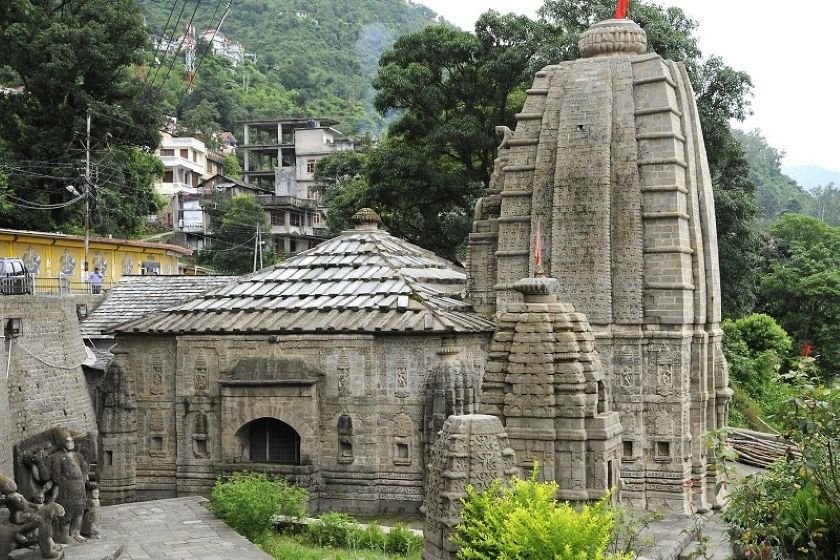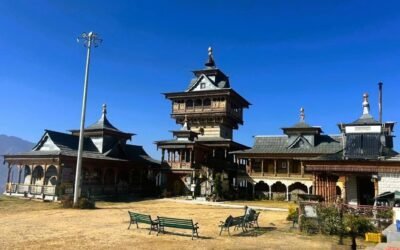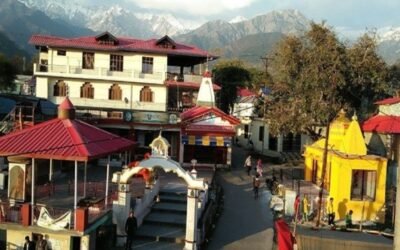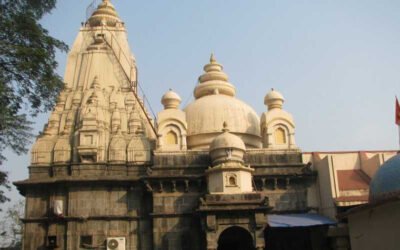Where Shiva rules the three worlds, and the river sings his name
Nestled in Purani Mandi (Old Mandi) near the confluence of the Beas and Suketi rivers, the Triloknath Temple is one of the most ancient and architecturally rich Shaivite shrines in Himachal Pradesh. Built in the early 16th century by Queen Sultan Devi, consort of Raja Ajbar Sen, this temple is dedicated to Lord Shiva as Trilokinath—“Lord of the Three Worlds”.
🌄 Location & Accessibility
- Location: Purani Mandi, near Victoria Bridge, Mandi Town, Himachal Pradesh – 175001
- By Road: Centrally located; easily accessible from Mandi Bus Stand (~1 km)
- By Rail: Joginder Nagar Railway Station (~55 km)
- By Air: Bhuntar Airport (~60 km) or Chandigarh Airport (~180 km)
- On Foot: A short walk from Bhutnath Temple and the Clock Tower
🕉️ Deity & Worship
The temple enshrines a three-faced idol of Lord Shiva, symbolizing his dominion over:
- Patal Lok (Netherworld)
- Bhulok (Earth)
- Swarg Lok (Heaven)
This rare tri-mukhi (three-faced) form is what gives the temple its name—Triloknath, or “Ruler of the Three Worlds”. The idol is accompanied by Goddess Parvati seated on Shiva’s lap, and flanked by deities like Sharada Devi (Saraswati) and Narada Muni.
Devotees offer bilva leaves, milk, and ghee lamps, and the temple is especially visited during Mahashivratri and Shravan month. Rituals include Rudrabhishek, chanting of Shiva Sahasranama, and lighting of the havan kund.
🏛️ Architecture & Setting
The temple is a masterpiece of Shikhara-style architecture, featuring:
- A square garbhagriha (sanctum) and a rectangular mandapa (hall)
- Pancha-ratha plan with sculpted niches of Mahishasura Mardini, dancing figures, and Ganesh
- Fluted columns, trefoil arches, and carved doorframes with floral and human motifs
- Balconies with horsemen, musicians, and dwarpalas (guardians) adorning the outer walls
The temple’s location on the banks of the Beas River adds to its spiritual gravitas, making it a favorite for pilgrims, historians, and photographers alike.
📜 Historical & Cultural Significance
- Built around 1520 AD by Queen Sultan Devi, during the reign of Raja Ajbar Sen, founder of modern Mandi
- Part of the Sena dynasty’s temple-building legacy, which traces its roots to Bengal and Karnataka
- The temple has withstood floods, dynastic changes, and centuries of devotion, remaining a pillar of Mandi’s spiritual identity
🎉 Festivals & Celebrations
- Mahashivratri: Celebrated with night-long bhajans, havans, and devta processions
- Shravan Mondays: Special abhisheks and offerings
- Daily Worship: Morning and evening aartis, incense offerings, and chanting of Rudram
🏞️ Nearby Attractions
- Bhutnath Temple: The spiritual heart of Mandi
- Panchvaktra Temple: A rare five-faced Shiva shrine
- Tarna Devi Temple: A Shakti shrine atop a hill
- Rewalsar Lake: A sacred site for Hindus, Buddhists, and Sikhs
🙏 Spiritual Experience
The Triloknath Temple of Mandi is not just a shrine—it is a cosmic mirror, a place where Shiva’s three faces gaze across time, space, and soul. As you stand before the sanctum, with the river murmuring below and the carvings whispering stories, you feel the presence of a god who rules not just the worlds—but the heart. It is a temple where architecture becomes mantra, and the **soul finds its axis in the gaze of the threefold flame.




